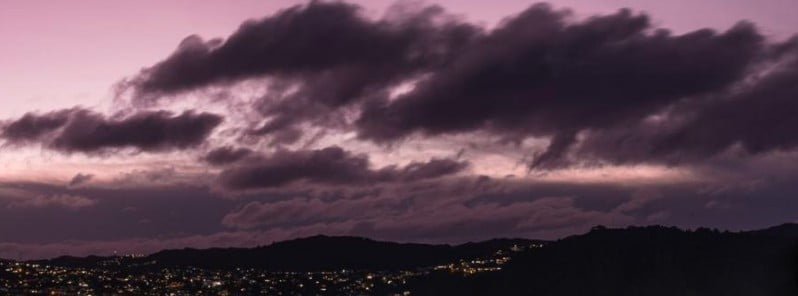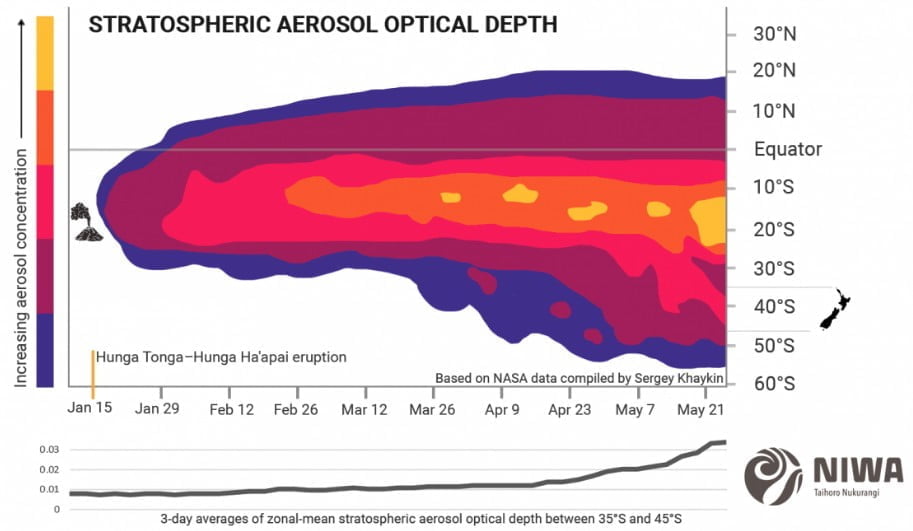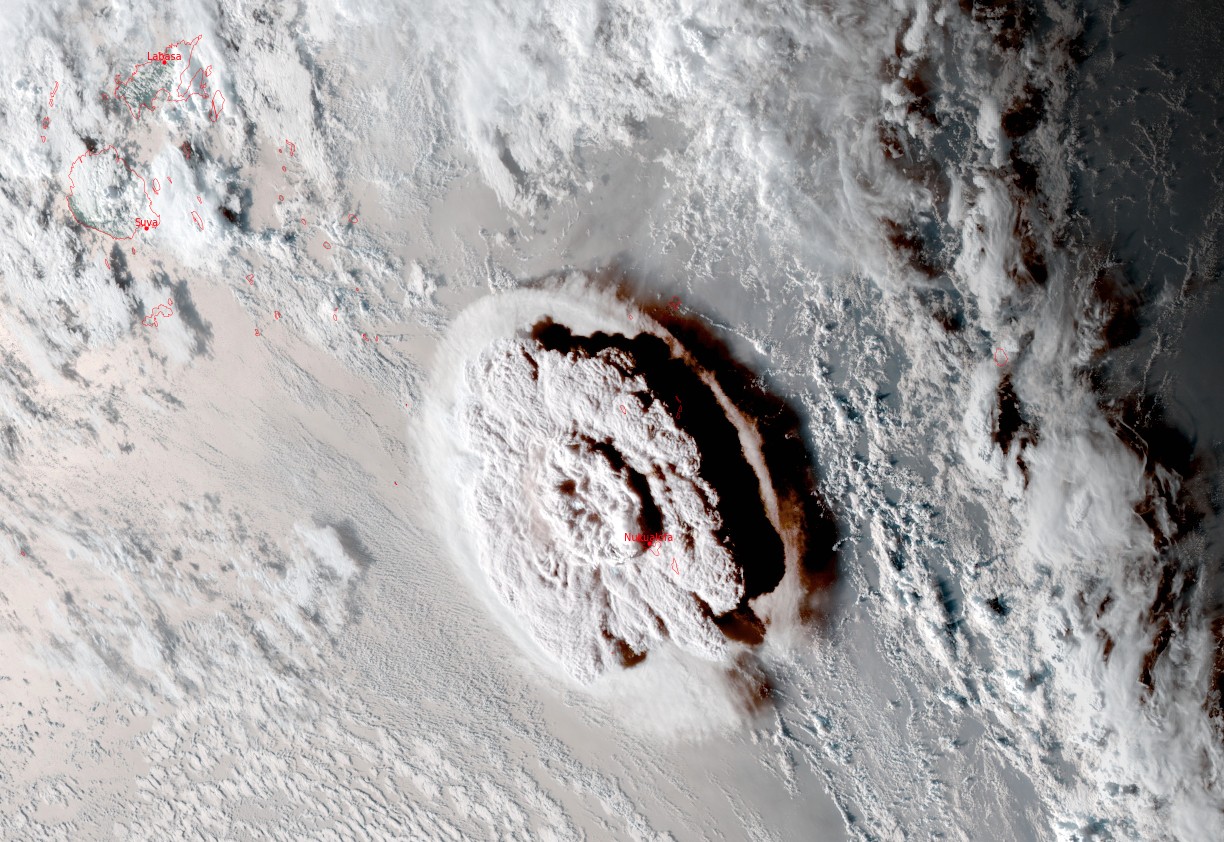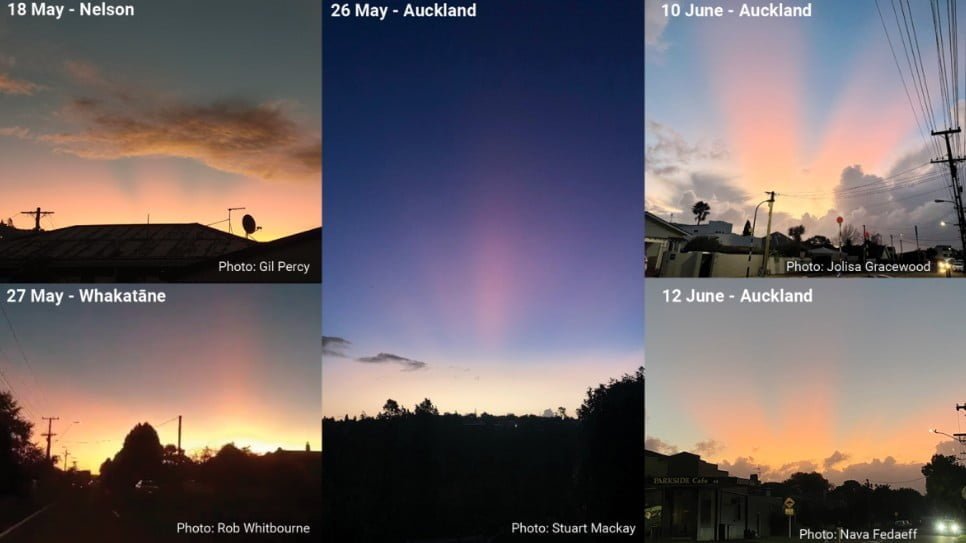Volcanic twilights over New Zealand

Very high concentrations of aerosols originating from the plume of volcanic gas and ash produced by the massive eruption at Hunga Tonga-Hunga Ha’apai volcano on January 15, 2022, are now causing stunning, fiery colors in the sky over New Zealand.
Since late May 2022, NIWA’s forecasting team has been flooded with messages from members of the public across the country, inquiring about a strange but beautiful phenomenon – stunning, fiery colors in the sky, appearing just before or after the Sun crosses the horizon.1
To understand these sightings, NIWA contacted their colleagues at the Lauder Atmospheric Research Station in Central Otago, who confirmed that their ground-based LIDAR (Light Detection and Ranging) instrument has been detecting unusual spikes in aerosols in the stratosphere, at around 20-25 km (12 – 15 miles) above New Zealand.

“It is thought that these aerosols are the cause of the remarkable skyscapes being spotted around the country lately,” NIWA said.
The aerosols originate from the plume of gas and ash that was ejected when the Hunga Tonga—Hunga Ha’apai volcano erupted in January 2022.2

The eruptive column reached a height of about 30 km (98 500 feet) above sea level, according to data provided by the Ozone Mapping and Profiler Suite (OMPS) Limb Profiler aboard the Suomi NPP satellite.
Other estimates suggest the cloud could have reached as high as 39 km (127 900 feet) a.s.l.
The eruption produced a huge shockwave that circled the planet two times.
The aerosols produced in January have been dispersing around the globe ever since, with concentrations spiking in the New Zealand region since mid-May.
This has been confirmed by researchers at the Institut Pierre-Simon Laplace in Paris, France.
Their analysis of satellite data shows that concentrations of stratospheric aerosols from the eruption have tripled between 35°S-45°S – the latitude where New Zealand lies on the globe – since April.
“Usually when you see a sunrise or sunset, it is the clouds that morph into the most vibrant colors. However, when stratospheric aerosols are present following a volcanic eruption, they scatter and bend the light as the sun dips or rises past the horizon, creating a glow in the sky with hues of blue, purple, and violet,” NIWA forecaster Nava Fedaeff said.
Since the colors achieve their greatest intensity after the Sun has set or before it rises, these volcanic twilights are known as afterglows.


This is not the first time that New Zealand has experienced this natural phenomenon.
After Mount Pinatubo in the Philippines erupted in 1991, sunset afterglows persisted to varying degrees for months, meaning New Zealanders could be treated to these lovely evening colors for a while longer.
References:
1 The Tongan volcanic eruption may be responsible for New Zealand’s unusually vibrant sunrises and sunsets – NIWA – June 15, 2022
2 Massive eruption at Hunga Tonga-Hunga Ha’apai produces huge shockwave and tsunami, Tonga – The Watchers – January 15, 2022
Featured image: Volcanic twilight over New Zealand – June 2022. Credit: NIWA, Lana Young

Commenting rules and guidelines
We value the thoughts and opinions of our readers and welcome healthy discussions on our website. In order to maintain a respectful and positive community, we ask that all commenters follow these rules.